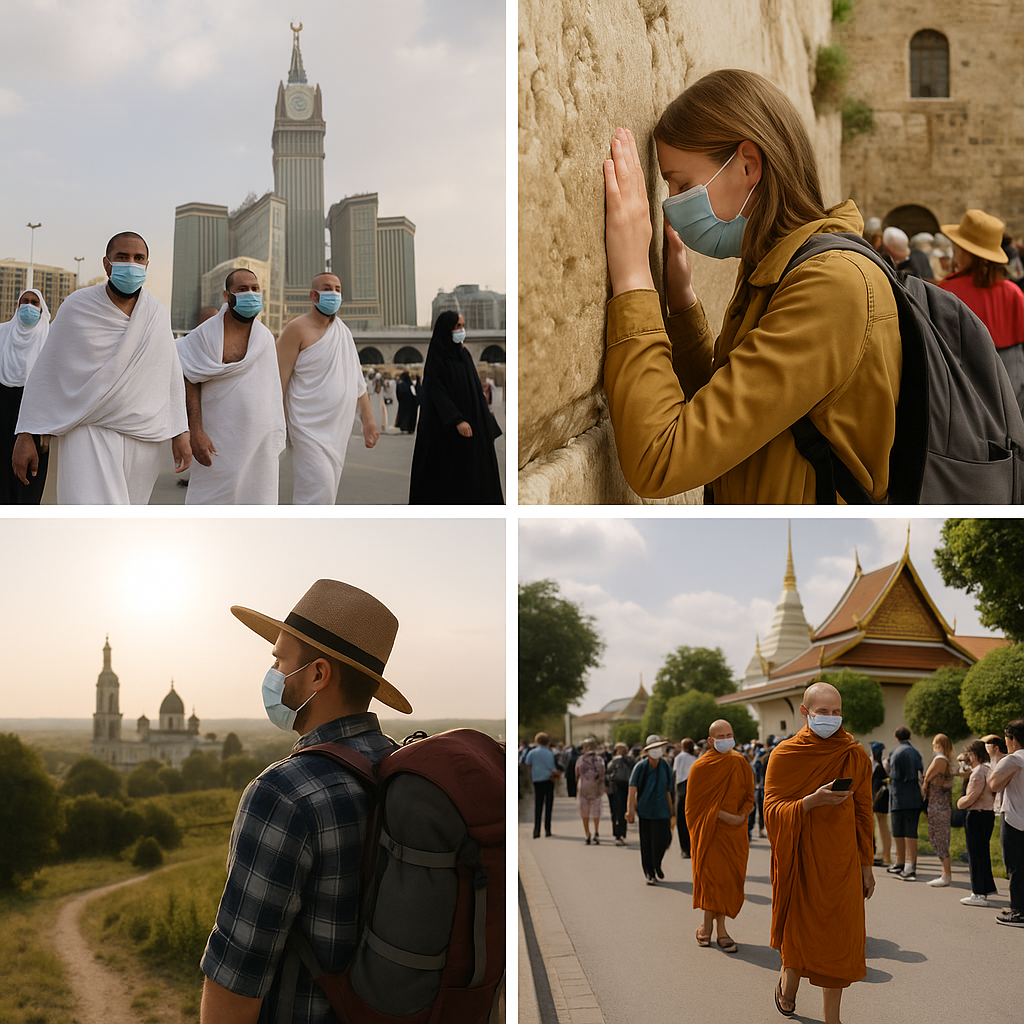Pilgrimage Tourism: What’s Changed Post-Covid and What’s Now Trending
The Covid-19 pandemic reshaped the world in countless ways — travel, faith, and human connection among them. For millions of believers, pilgrimage was once a deeply personal spiritual journey — from walking barefoot to sacred temples to crossing mountains for holy shrines. But when lockdowns shut borders and gatherings stopped, pilgrimage came to a standstill. In the post-pandemic world, however, pilgrimage tourism has made a strong comeback — though not without transformation. The new era of spiritual travel is more mindful, tech-savvy, sustainable, and inclusive than ever before.
A Pause That Brought Reflection
Before 2020, pilgrimage tourism was one of the fastest-growing segments of global travel, with millions visiting Mecca, the Vatican, Varanasi, Bodh Gaya, Amarnath, and Jerusalem every year. When the pandemic struck, these places turned silent for the first time in centuries. The interruption forced both devotees and temple authorities to rethink what pilgrimage meant.
Many pilgrims turned inward — discovering meditation, online rituals, and local shrines in their own towns. The long pause deepened the emotional value of pilgrimage. It was no longer just a religious act but a rediscovery of identity and inner peace.
Return of the Pilgrim — With New Intentions
Since 2022, pilgrimage tourism has surged back with renewed enthusiasm. But what’s changed is the motivation and mindset. Pilgrims today travel not just for religious duty, but for wellness, gratitude, and spiritual rejuvenation.
For example, after the stress of the pandemic, more travelers combine visits to shrines with yoga retreats, Ayurveda therapies, and meditation camps. In India, destinations like Rishikesh, Varanasi, and Bodh Gaya are attracting not only devotees but also wellness seekers from across the world.
People now want “purposeful travel” — experiences that connect mind, body, and spirit. A trip to Vaishno Devi or Tirupati is often paired with eco-treks or volunteer work in nearby villages. This merging of devotion and conscious travel defines the new age of pilgrimage.
Digital Pilgrimage: Faith Meets Technology
The pandemic accelerated digital innovation in the religious world. When physical access to temples and shrines was limited, online darshans, live aartis, and virtual tours became the new norm. Even after reopening, these digital options remain highly popular.
Temples like Kashi Vishwanath, Puri Jagannath, and Siddhivinayak now offer online booking systems, queue management apps, and donation portals to make pilgrimage smoother and safer. For global devotees, 360° virtual experiences have brought faraway sacred sites to their homes.
Social media has also transformed the landscape — influencers and travel vloggers now share devotional journeys, inspiring others to embark on their own spiritual quests. This blending of technology and tradition ensures that faith remains accessible to all, regardless of geography or health.
Eco-Friendly and Sustainable Pilgrimages
Another post-Covid shift is the growing focus on sustainability. The pandemic reminded humanity of its fragile relationship with nature, and this awareness has entered the world of faith too.
Many temples and pilgrimage routes are now adopting eco-friendly practices — from banning single-use plastics to introducing solar energy and waste management systems. The Char Dham Yatra in Uttarakhand and Amarnath Yatra in Jammu & Kashmir have seen renewed emphasis on cleanliness and environmental protection.
Travelers are also more conscious of their ecological footprints. There’s a rising trend of slow travel, where pilgrims spend more time connecting with the local environment and communities instead of rushing through checklists. Spiritual tourism is, thus, becoming more ethical and environmentally responsible.
Local and Lesser-Known Shrines on the Rise
While major pilgrimage destinations continue to attract crowds, smaller and lesser-known sites are now gaining popularity. Covid restrictions taught people to explore nearby sacred spots — and that habit has continued.
Local temples, rural ashrams, and offbeat Sufi shrines have become new spiritual hubs. This has helped distribute tourism benefits to smaller communities and reduce pressure on overcrowded centers like Varanasi or Tirupati. States such as Madhya Pradesh, Odisha, and Himachal Pradesh are actively promoting “spiritual circuits” that combine famous and hidden pilgrimage spots.
This decentralization of faith travel has made pilgrimage tourism more diverse and regionally inclusive.
Health, Hygiene, and Infrastructure Upgrades
Post-pandemic pilgrims are more conscious about health, safety, and cleanliness. Governments and temple trusts have responded by improving facilities — from better sanitation and medical aid centers to wider roads, digital passes, and crowd management systems.
For instance, the revamped Kashi Vishwanath Corridor in Varanasi and Mahakal Lok Corridor in Ujjain reflect a new era of modernized pilgrimage experiences. Such projects combine tradition with world-class infrastructure, making spiritual journeys more comfortable and accessible, especially for elderly devotees.
Trending Now: Blending Faith, Wellness & Culture
The latest trend in pilgrimage tourism is the fusion of spirituality with culture and wellness. Tourists now prefer packages that include temple visits, local cuisine experiences, yoga workshops, and storytelling tours that connect faith with heritage.
Destinations like Rameswaram, Dwarka, Bodh Gaya, and Pushkar are offering integrated experiences — from sunrise meditations to heritage walks. Even international travelers are showing renewed interest in Indian spirituality, drawn by the country’s blend of faith, nature, and self-discovery.
A Rebirth of Sacred Travel
Pilgrimage tourism after Covid is not just about visiting holy sites; it’s about healing, gratitude, and reconnection. The pandemic reminded the world that spirituality is not confined to rituals — it’s about unity, compassion, and balance with nature.
In this new era, faith-based journeys are becoming more personalized, sustainable, and soulful. Whether it’s a trek to Kedarnath, a walk along the Ganga, or a quiet prayer in a village temple — every step now holds deeper meaning.
Pilgrimage tourism has been reborn — as a path not only to God, but to one’s own inner peace.
~Religion World Bureau









